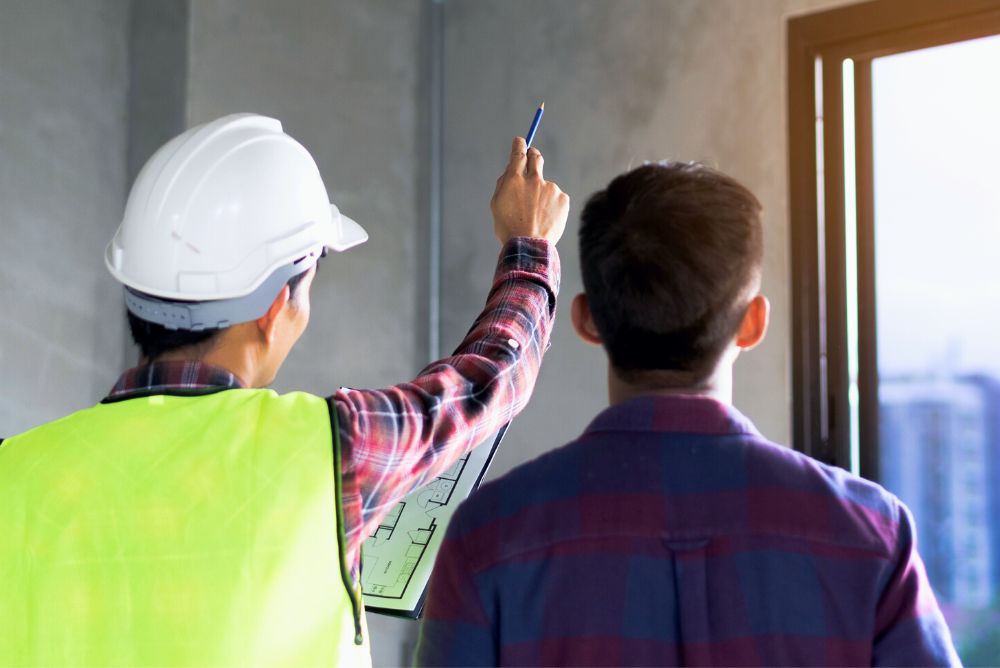Water leaks inside walls are a common problem that can lead to severe damage if not addressed promptly. If you suspect a water leak inside one of your walls, it’s important to find and resolve the issue as quickly as possible. This blog will walk you through how to detect water leaks inside your walls and explain why water wall inspections are so crucial.
How to Detect a Water Leak in Your Wall
The first step in identifying a water leak inside your wall is to check for visible signs of water damage. These signs may include peeling paint, discoloration, mold, or mildew. If you notice any of these issues, it’s a strong indication that moisture is entering your walls and you should schedule a water wall inspection right away.
If there are no obvious signs on the exterior of the wall, you’ll need to look for more subtle clues. Start by checking for damp spots on the floor near the wall or for any unusual sounds like dripping or gurgling coming from within the wall. If you still can’t locate the leak, it’s time to call in a professional. Experienced home inspectors can pinpoint hidden leaks with specialized tools and techniques.
What Causes Water Leaks Inside Walls?
Several factors can cause water leaks inside your walls. The most common causes include:
- Plumbing Issues: Corroded or broken pipes can lead to water leaks inside the walls. Old plumbing fixtures, such as faulty shut-off valves, can also contribute to the problem.
- Foundation or Roof Cracks: Water can seep into walls if there are cracks in the foundation or roof. This is especially common in areas with heavy rainfall or poor drainage systems.
- Improper Roof Flashing: Flashing is designed to prevent water from entering the walls at the junction between the roof and wall. If this flashing is damaged or improperly installed, water can easily leak into your walls.
How to Find a Water Leak Inside Your Wall: Step-by-Step Guide
Here are some steps you can take to help identify a water leak inside your wall:
- Inspect for Water Damage: Look for signs like peeling paint, water stains, or mold on the exterior of your home. These are common indicators of water damage.
- Look for Wet Spots: Check for damp spots on the floor near the base of the wall or any visible moisture along the wall itself. These wet areas are often signs that water is coming from within the wall.
- Listen for Dripping or Gurgling: Sometimes, you may hear water dripping or gurgling inside the wall. If you hear these sounds, it’s likely there’s an active leak behind the wall.
- Call a Professional Inspector: If you can’t locate the source of the leak, it’s time to call a professional. A skilled home inspector can use advanced equipment, like moisture meters and infrared cameras, to detect hidden leaks and moisture.
- Act Quickly: Water leaks can cause serious damage to your home’s structure. The faster you locate and repair the leak, the less damage you’ll incur.
How Home Inspectors Perform Water Wall Inspections
Home inspectors use a methodical approach to identify leaks inside walls. They begin with a visual inspection of the outside of your home, looking for signs of water damage such as discoloration, mold, or peeling paint. They will then move inside your home and inspect areas around the walls for wet spots or moisture. If a leak is suspected, they may use tools like moisture meters or infrared cameras to detect hidden moisture behind the walls.
Once the leak is located, the inspector will provide recommendations for repairs. Minor leaks may only require sealing the hole, while more severe leaks could require replacing plumbing or drywall.
How to Repair a Water Leak Inside a Wall
Once the leak has been located, it’s time to fix it. For minor leaks, you may be able to patch the hole with caulk or putty. However, more serious leaks may require cutting out the damaged drywall and replacing it. If plumbing pipes are involved, you may need to repair or replace the affected pipes before sealing the wall again.
After fixing the leak, you’ll likely need to repaint or re-wallpaper the area to restore the appearance of the wall.
Potential Damage from Untreated Water Leaks
If left unchecked, water leaks inside walls can cause extensive damage. Prolonged exposure to moisture can weaken the structure of your walls and foundation, leading to mold, mildew, and rot. The longer a leak goes untreated, the more damage it can cause to both your home and belongings.
Preventing Future Water Leaks
While it’s not always possible to prevent water leaks, there are a few measures you can take to reduce the risk:
- Maintain Plumbing: Regularly inspect your plumbing and repair any leaks or drips promptly. This can prevent water from entering your walls in the first place.
- Monitor Vulnerable Areas: Keep an eye on areas of your home prone to water leaks, such as the kitchen, bathroom, and attic. Make sure these areas are properly sealed and maintained.
- Schedule Regular Inspections: Have your home professionally inspected for potential water leaks on a regular basis. Early detection can help you avoid costly repairs down the line.
Contact Guardian Angel Inspections for a Comprehensive Water Wall Inspection
If you suspect a water leak in your walls, don’t wait to address the issue. At Guardian Angel Inspections, our experienced team can conduct a thorough water wall inspection and identify any hidden leaks. We use advanced tools to detect moisture and can provide you with detailed recommendations for repairs.
Contact us today to schedule your water wall inspection and ensure your home remains safe and dry.
